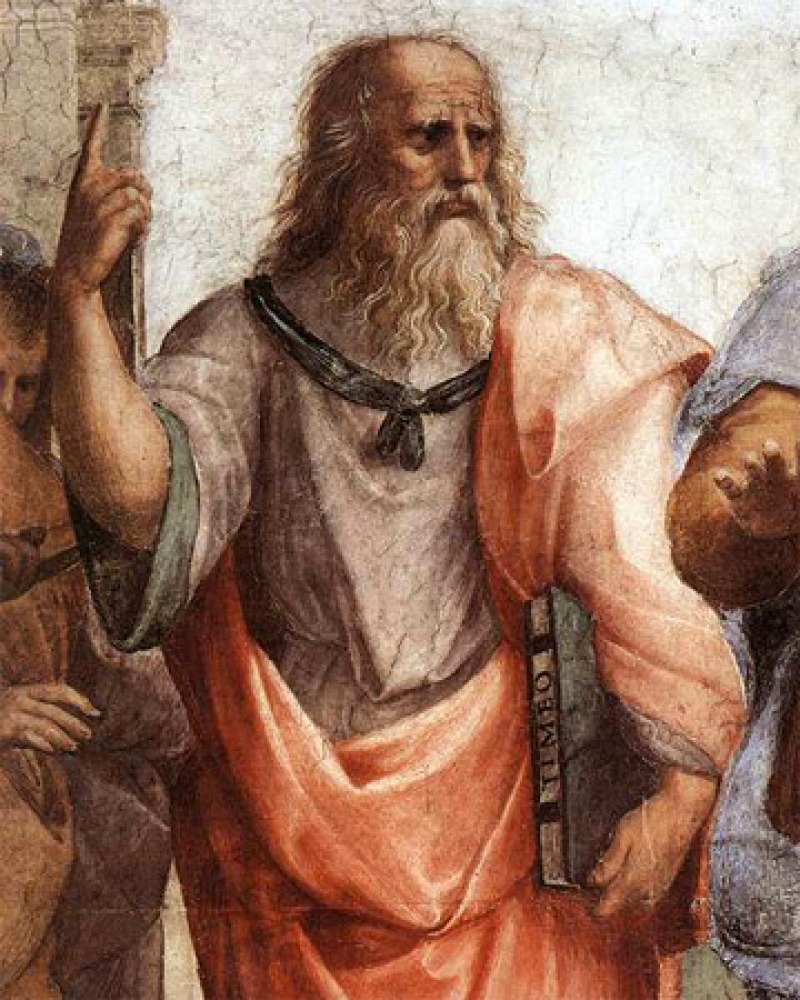Greek philosopher. A pupil of Plato, the tutor of Alexander the
Great, and the author of works on logic, metaphysics, ethics,
natural sciences, politics, and poetics, he profoundly influenced
Western thought. In his philosophical system, which led him to
criticize what he saw as Plato's metaphysical excesses, theory
follows empirical observation and logic, based on the syllogism,
is the essential method of rational inquiry.Influenced by his father, the physician
Nicomachus, Aristotle developed an
early interest in science. As a student of
Plato he formed a love of philosophy and
logic. He then became the tutor to
Alexander of Macedon (later Alexander
the Great). After Alexander became king,
Aristotle returned to Athens, where he
founded his own school, known formally
as the Lyceum and less formally as the
Peripatetic ("walking around") school,
because students followed their teacher
as he walked in the garden. Aristotle is
considered the father of biology.
Alexander the Great became his patron,
funding his work and arranging for
Aristotle to receive samples of plants and
animals from all corners of the
Alexandrian empire. Ancient scholars
attributed as many as 400 treatises to Aristotle, encompassing all knowledge in
Antiquity about the universe. About 30 have survived and these are thought to have
been compiled by his students.Greek philosopher and scientist whose
thought determined the course of Western intellectual history for two millenia. He
was the son of the court physician to Amyntas III, grandfather of Alexander the Great.
In 367 he became a student at the Academy of Plato in Athens; he remained there for
20 years. After Plato's death in 348/347, he returned to Macedonia, where he became
tutor to the young Alexander. In 335 he founded his own school in Athens, the
Lyceum. His intellectual range was vast, covering most of the sciences and many of
the arts. He worked in physics, chemistry, biology, zoology, and botany; in
psychology, political theory, and ethics; in logic and metaphysics; and in history,
literary theory, and rhetoric. He invented the study of formal logic, devising for it a
finished system, known as syllogistic, that was considered the sum of the discipline
until the 19th century; his work in zoology, both observational and theoretical, also
was not surpassed until the 19th century. His ethical and political theory, especially
his conception of the ethical virtues and of human flourishing (“happiness”), continue
to exert great influence in philosophical debate. He wrote prolifically; his major
surviving works include the Organon, De Anima (“On the Soul”), Physics,
Metaphysics, Nicomachean Ethics, Eudemian Ethics, Magna Moralia, Politics,
Rhetoric, and Poetics, as well as other works on natural history and science.
Life
Aristotle's father, Nicomachus, was a noted physician. Aristotle studied (367–347 B.C.)
under Plato at the Academy and there wrote many dialogues that were praised for
their eloquence. Only fragments of these dialogues are extant. He tutored (342–c.339
B.C.) Alexander the Great at the Macedonian court, left to live in Stagira, and then
returned to Athens. In 335 B.C. he opened a school in the Lyceum; some distinguished
members of the Academy followed him. His practice of lecturing in the Lyceum's
portico, or covered walking place (peripatos), gave his school the name Peripatetic.
During the anti-Macedonian agitation after Alexander's death, Aristotle fled in 323
B.C. to Chalcis, where he died.
Works
Aristotle's extant writings consist largely of his written versions of his lectures; some
passages appear to be interpolations of notes made by his students; the texts were
edited and given their present form by Andronicus of Rhodes in the 1st cent. B.C.
Chief among them are the Organum, consisting of six treatises on logic; Physics;
Metaphysics; De Anima [on the soul]; Nicomachean Ethics and Eudemian Ethics; De
Poetica [poetics]; Rhetoric; and a series of works on biology and physics. In the late
19th cent. his Constitution of Athens, an account of Athenian government, was found.
Aristotle (Greek: Ἀριστοτέλης Aristotélēs) (384 BCE – March 7, 322 BCE) was an
ancient Greek philosopher, a student of Plato and teacher of Alexander the Great. He
wrote on diverse subjects, including physics, poetry, biology and zoology, logic,
rhetoric, politics and government, and ethics. Along with Socrates and Plato, Aristotle
was one of the most influential of ancient Greek philosophers. They transformed
Presocratic Greek philosophy into the foundations of Western philosophy as we know
it. Some consider Plato and Aristotle to have founded two of the most important
schools of Ancient philosophy; others consider Aristotelianism as a development and
concretization of Plato's insights.
Although Aristotle wrote dialogues, only fragments of these have survived. The
works that have survived are in treatise form and were, for the most part, unpublished
texts. These are generally thought to be lecture notes or texts used by his students.
Among the most important are Physics, Metaphysics (or Ontology), Nicomachean
Ethics, Politics, De Anima (On the Soul) and Poetics. These works, although
connected in many fundamental ways, differ significantly in both style and substance.
Aristotle was a polymath. He not only studied almost every subject possible at the
time, but made significant contributions to most of them. In science, Aristotle studied
anatomy, astronomy, economics, embryology, geography, geology, meteorology,
physics, and zoology. In philosophy, Aristotle wrote on aesthetics, ethics, government,
metaphysics, politics, psychology, rhetoric and theology. He also dealt with education,
foreign customs, literature and poetry. His combined works practically constitute an
encyclopedia of Greek knowledge.


